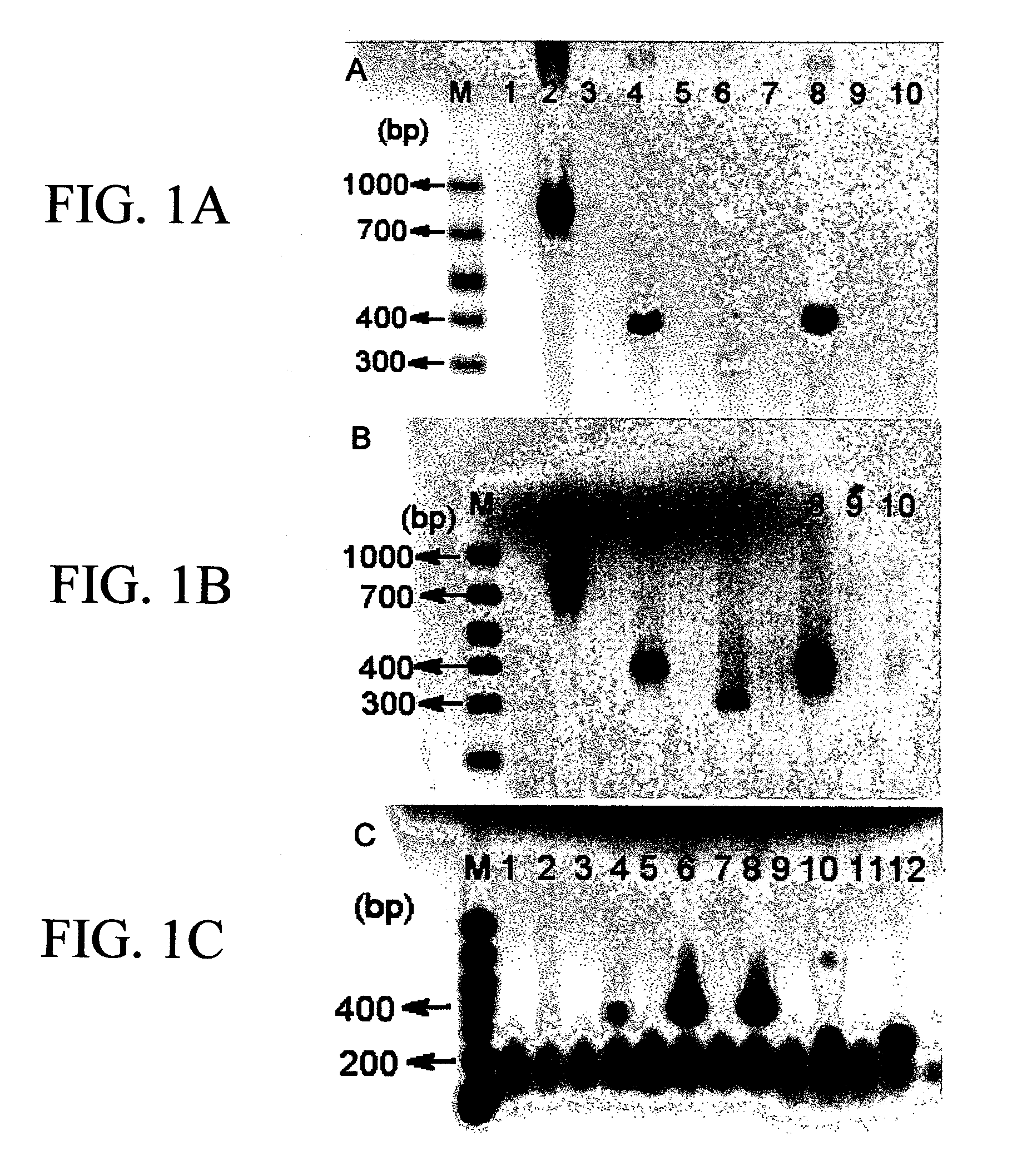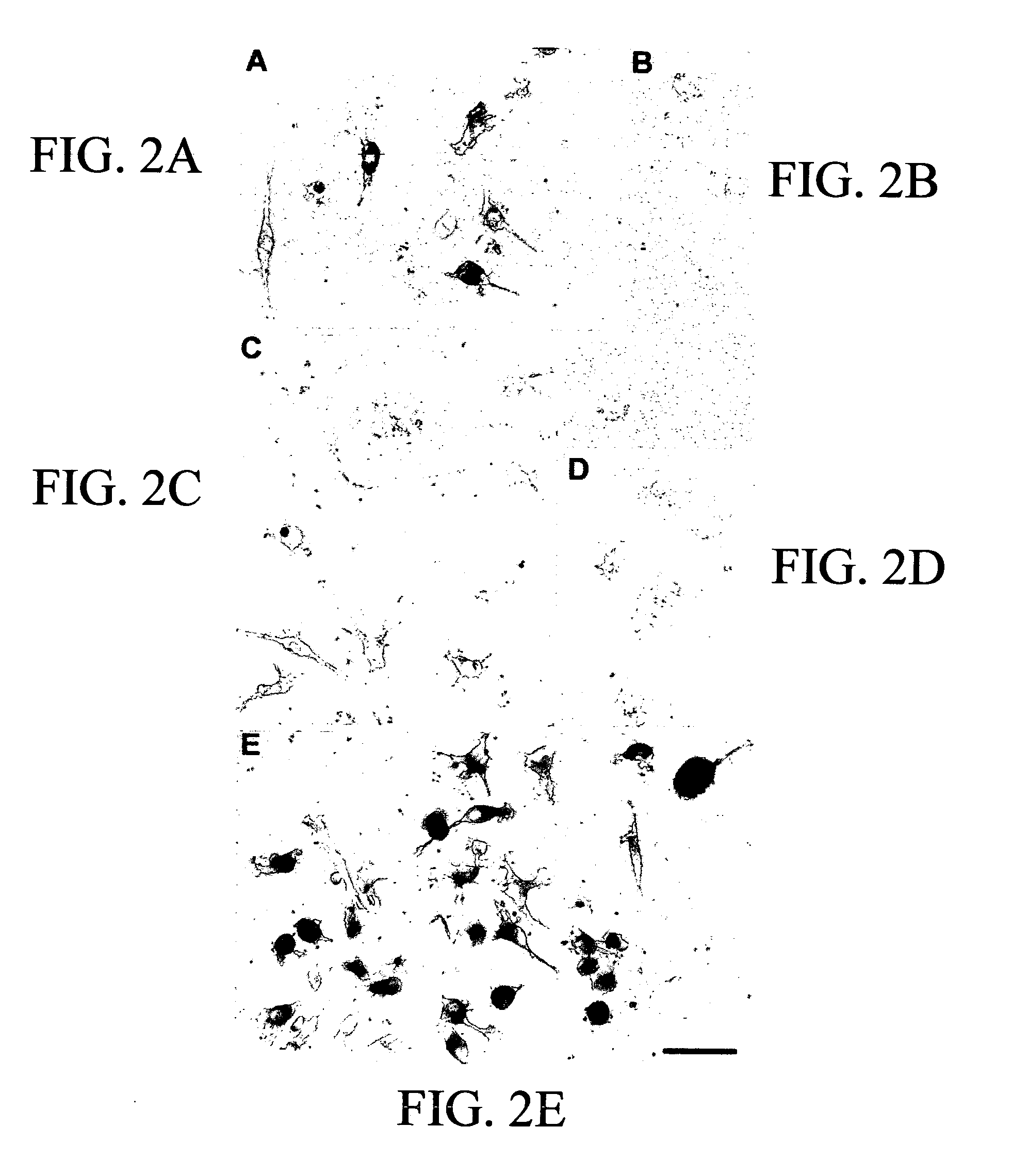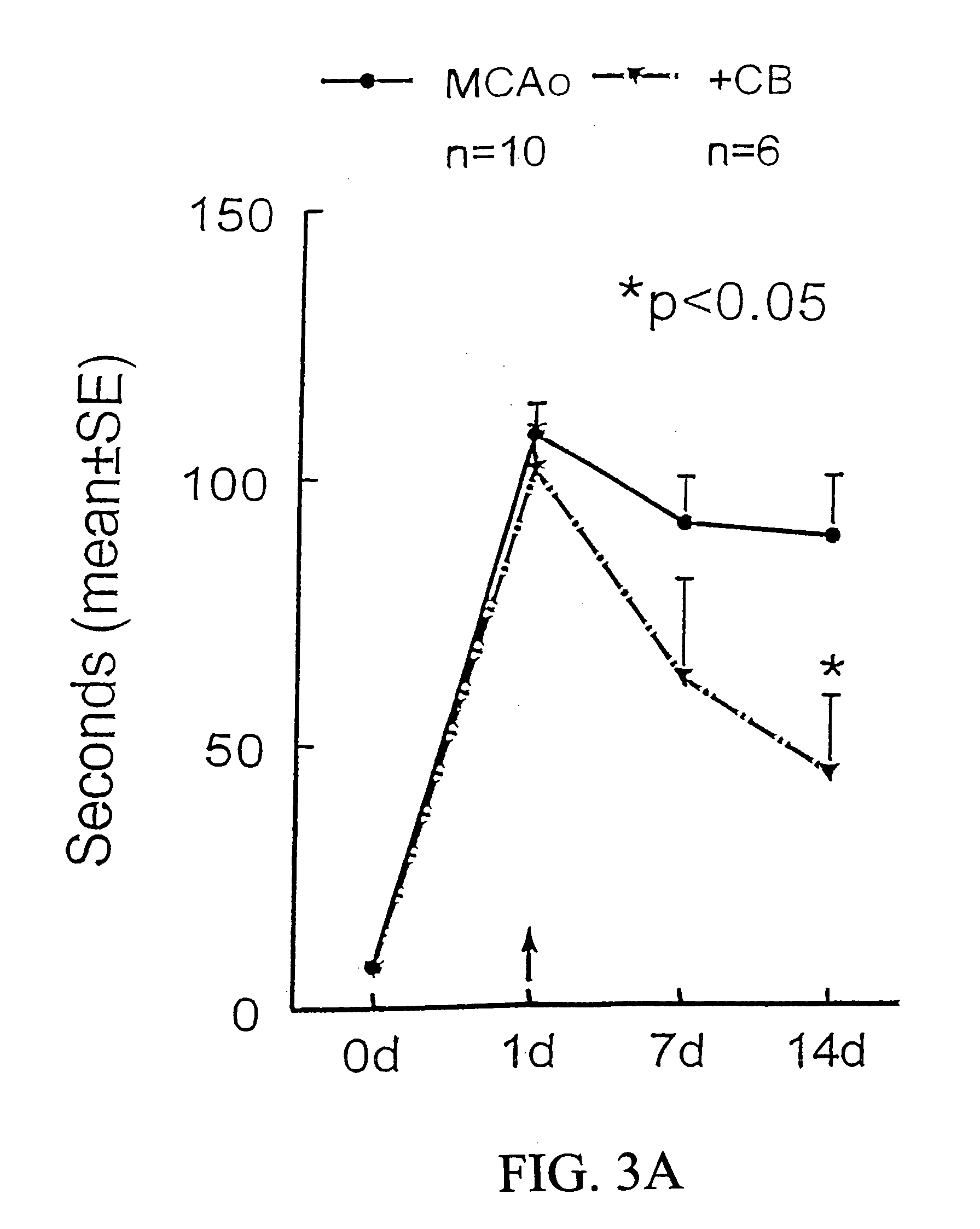Human cord blood as a source of neural tissue for repair of the brain and spinal cord
a neural tissue and human cord blood technology, applied in the field of human umbilical cord blood and/or mononuclear cell fragment, can solve the problems of inability to rebuild the neural tissue of the adult brain and spinal cord, the loss of basal ganglia dopamine, etc., to achieve the effect of facilitating differentiation into neuronal
- Summary
- Abstract
- Description
- Claims
- Application Information
AI Technical Summary
Benefits of technology
Problems solved by technology
Method used
Image
Examples
examples
Preparation of Cellular Samples
[0086]Cryopreserved or fresh umbilical cord blood (from human or rat umbilical cord that remains attached to placenta after delivery) is harvested and processed by Ficoll centrifugation. This results in nearly 100% recovery of mononuclear cells which can be a) grafted directly into a region of injured brain (eg in a rat stroke model or model of neurodegenerative disease or trauma model) b) processed into sub-populations based on surface markers or c) cryopreserved for later use. Initial experiments with umbilical cord blood utilize all of the mononuclear cells collected, without separation of CD34+ cellular components (hematopoietic stem cells). Other experiments utilize cord blood that is depleted of CD34+ cells as described below. Approximately 100,000 to 90,000,000 (1×105 to about 9×107, preferably at least about 1×106) cord blood cells are injected into the hemisphere rendered ischemic by acutely obstructing blood flow to cerebral cortex. Assessmen...
example
Parenteral Administration of Human Umbilical Cord Blood in Reducing Neurological Deficits After Traumatic Brain Injury
Materials and Methods
[0202]Preparation of Human Umbilical Cord Blood for Injection. The human umbilical cord blood used was a gift from Cryocell International, INC. (Clearwater, Fla.). The specimen was stored in liquid nitrogen and the cells were restored at 37° C. After centrifugation at 1000 rpm / min for 10 min at 4° C., the supernatant was removed and the cells were washed with 0.1 M PBS two times. 30 ul of the cell suspension was mixed with 30 ul of 0.4% trypan blue stain and the number of the viable cells was counted with a hemacytometer and a counter under a phase contrast microscope. The total number of the harvested cells was calculated and the final dilution was 2×106 cells in 300 μl saline.
[0203]Controlled Cortical Injury Animal Model and the Injection of HUCB. Wistar rats were anesthetized with 350 mg / kg body weight chloral hydrate, intraperitoneally. Recta...
PUM
| Property | Measurement | Unit |
|---|---|---|
| time | aaaaa | aaaaa |
| volume | aaaaa | aaaaa |
| density | aaaaa | aaaaa |
Abstract
Description
Claims
Application Information
 Login to View More
Login to View More - R&D
- Intellectual Property
- Life Sciences
- Materials
- Tech Scout
- Unparalleled Data Quality
- Higher Quality Content
- 60% Fewer Hallucinations
Browse by: Latest US Patents, China's latest patents, Technical Efficacy Thesaurus, Application Domain, Technology Topic, Popular Technical Reports.
© 2025 PatSnap. All rights reserved.Legal|Privacy policy|Modern Slavery Act Transparency Statement|Sitemap|About US| Contact US: help@patsnap.com



